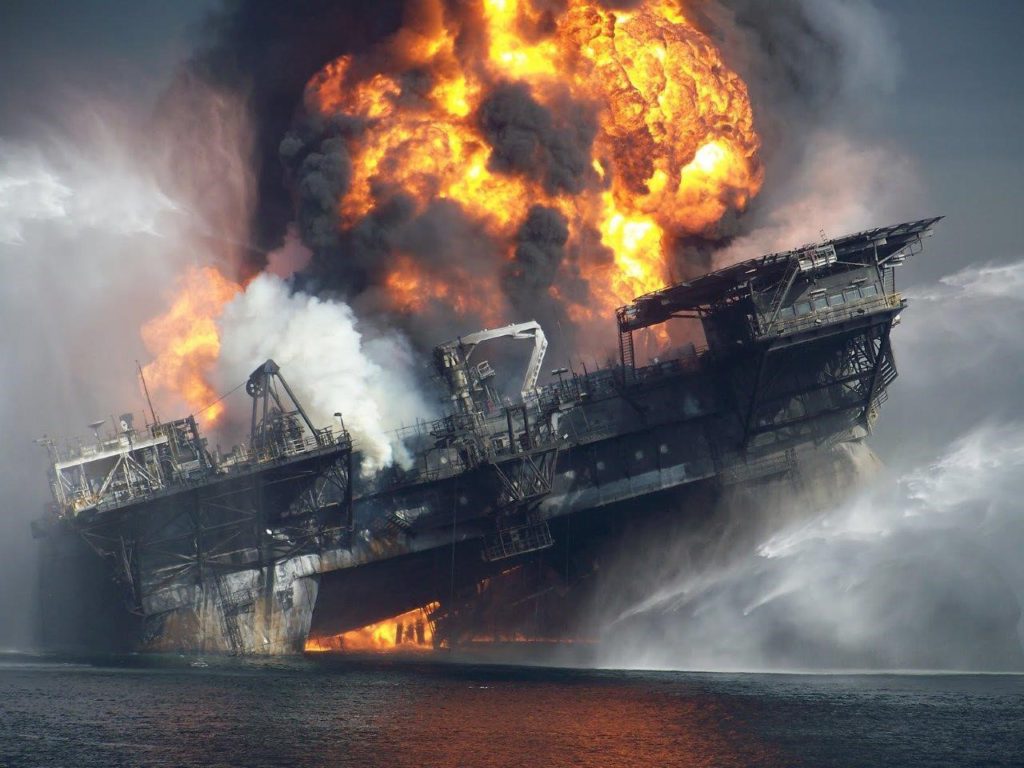
On April 20, 2010, in the Gulf of Mexico on the BP-operated Macondo Prospect, a catastrophic failure on the Deepwater Horizon platform resulted in a massive oil spill considered to be the largest marine oil spill in the history of the petroleum industry and estimated to be 8% to 31% larger in volume than the previous largest, the Ixtoc oil spill, also in the Gulf of Mexico.
The U.S. Federal Government estimated the total discharge at 4.9 million barrels (210 million US gal; 780,000 m3). After several failed efforts to contain the flow, the well was declared sealed on September 19, 2010.
The ultimate cause of the blow-out was a poor cement job, undetected because a Bond Log was not conducted. This resulted in ingress of formation fluids into the well-bore when heavy drilling mud was circulated out and replaced with sea-water, placing the well in an under-balanced situation, prior to planned well suspension as a producer.
This should not have produced the uncontrolled flow to surface however and the BOP should have been capable of controlling flow. This video examines the failure of the BOP and does so well. Differential pressure between the tubing and annular pressures resulted in flexing of the drill-string out of the path of the blind-shear rams which would normally have sheared the drillpipe and contained the well.
However, there was one decision that ultimately lead to the inability of the crew to control the well. In their haste to de-mob the rig, instead of circulating out the drilling mud to monitored mud tanks on the rig, the crew elected to dump the mud directly off-rig to a waiting barge. The barge had no ability to accurately monitor mud volumes. If the mud tanks on the rig had been used the crew would have quickly seen that the volumes being reported to the mud tanks were increasingly greater than the volumes of seawater being circulated into the well. The crew would immediately have realised that they had a well control issue, would have circulated heavier mud weights and would likely have controlled the well.
The US Government reports on the Deepwater Horizon investigation are available below.
Deepwater Horizon Final Report
Volume I – US Coast Guard Report
Volume II – US Department of the Interior Report
Deepwater Horizon Report Appendices
- Appendix A: Map of the Macondo Well, MC 252 Lease OCS-G 32306
- Appendix B: Report of John Rogers Smith
- Appendix C: Keystone Report
- Appendix D: DNV Report Volume 1 and Volume 2
- Appendix E: DNV Addendum to Final Report
- Appendix F: Halliburton Post-Job Cementing Report
- Appendix G: Negative Test Protocols
- Appendix H: Closing Sequences for the Deepwater Horizon BOP Stack
- Appendix I: APD Departures at the Macondo Well Granted by MMS
- Appendix J: Risk Register for the Macondo Well
- Appendix K: BP RACI Chart
- Appendix L: Production Casing Cement Job Decision
- Appendix M: Report of Oilfield Testing & Consulting
- Appendix N: Information on Transocean’s 21-Day Hitch Policy
The Internal BP investigation report on the Deepwater Horizon accident can be viewed and downloaded below.
deepwater-horizon-accident-investigation-report-executive-summary